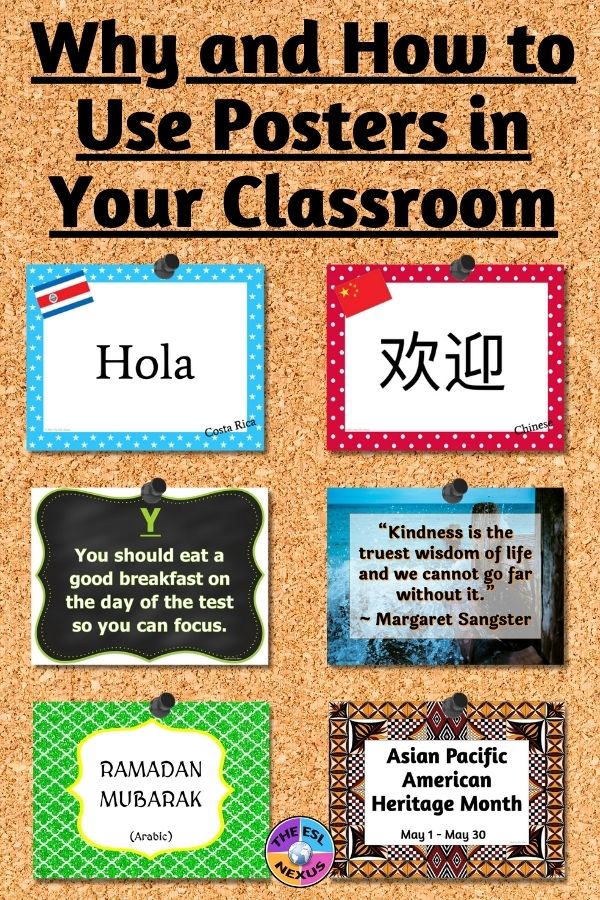If you don’t know who Greta Thunberg is, chances are your more environmentally-aware students do. She’s the Swedish teenager who started the worldwide movement of students striking on Fridays to address the impact of climate change. You can read more about her HERE.
Below are 8 websites that will help ELLs (and other students) learn about climate change. I’ve included a short description of each site and rated the level of language proficiency needed to comprehend the information in them. They are not listed in any particular order.
 |
| Click on the blue title links to go to the websites; source: The ESL Nexus |
Websites for Kids about Climate Change
Teach Climate Change Through Positive Action (For teachers)
By MiddleWeb
Read about 7 ways you can get your students involved in learning about and having a positive impact on climate change in this blog post. Within each category, 2-3 actionable ideas are offered.
NASA Climate Kids (Intermediate)
By the National Aeronautics and Space Administration
Webpages that answer “Big Questions” and provide info about weather & climate, the atmosphere, water, energy, and plants & animals. Includes videos, games, and activities that explain concepts in easy-to-understand ways. Lots of visuals make this site appropriate for ELLs and other students reading at a middle school grade level.
Climate Basics for Kids (Advanced)
By the Center for Climate and Energy Solutions
An informative website that explains the science behind climate change, what the greenhouse effect is, the impact of climate change, and what people can do about climate change. Includes some visuals but is mostly text-based. Links to many more webpages dealing with climate change and the environment are included at the bottom of the homepage screen.
What is Climate Change? (Advanced)
By National Geographic Kids
A webpage with basic information about the causes of climate change and its effects on the planet, wildlife, and people.
A Student’s Guide to Global Climate Change (Intermediate)
By the Environmental Protection Agency
Webpages about climate change basics and the impacts of climate change, how to think like a scientist, things people can do to help the environment, and how climate change affects different parts of the world. Each webpage has text and visuals along with links to further information. Some pages have interactive activities that students can do.
Tiki the Penguin’s Guide to Climate Change (Intermediate)
By the staff at OneWorld
A 3-minute pictorial guide explains climate change in language that is suitable for lower intermediate learners. The homepage has a table of contents with 10 links to click on for info related to climate change. Those pages include explanatory information, visuals, and links to even more information. The webpages are colorful and the paragraphs are short and written in informal language. A nice bonus is that the pages can be translated into 34 other languages, which is great for ELLs at beginning levels of language proficiency because it will help them understand the concepts presented.
Climate Change for Kids: OLogy (Intermediate)
By the American Museum of Natural History
This website includes articles, videos, games, quizzes, and activities about climate change. Lots of visuals and short texts help make the colorful webpages comprehensible.
Message from Antartica (Intermediate)
By Trans.MISSION
This is a short video, less than 3 minutes
long and narrated in British English, which explains how CO2 is harming
the planet. You can show the subtitles but they lack punctation so it
might a little hard for some ELLs to easily understand them. However,
the video does a good job explaining the impact of rising levels of
carbon dioxide in the atmosphere.
Students can use these websites in several ways:
* For information when writing research reports about climate change
* To find information when making oral presentations about climate change
* To develop collaboration skills by reading separate sections of a website and then working in small groups to create presentations about the website or climate change
* To develop listening skills by working in pairs and having students take turns reading sections aloud and paraphrasing the information
* To learn new words by creating tasks that develop knowledge of scientific vocabulary words
* To develop writing skills by summarizing information on selected webpages
* To compare information about climate change on different websites by listing the commonalities and the differences in information presented
* To find activities they can do that help preserve the environment
For more ideas and ways to protect and preserve the environment, please check out my Gift Guide for Environmentally-Aware Educators.
Happy Earth Day!




